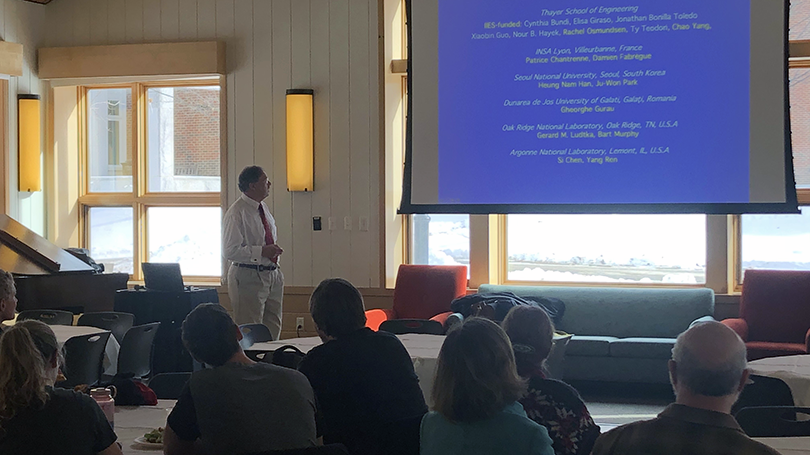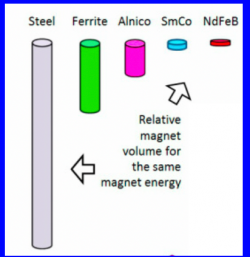

On Thursday, January 23, 2020 in Occom Commons, Baker Sherman Fairchild Professor of Engineering and Senior Associate Dean Ian Baker gave a talk over lunch. He spoke to us about the utility of high performance iron-nickel permanent magnets for electric motors.
Baker began by explaining the different types of magnets that have been used in engineering sciences over the centuries. In order to maximize efficiency, chemists and engineers have been working to create magnets that are simultaneously smaller and more powerful. The graphic below, pulled from Baker's slides, helped illustrate this evolution.

At this point in the talk, Baker clarified where magnets fit into our energy transition: solar panels and wind turbines—two critical pieces of renewable energy infrastructure which require small, efficient magnets to work. Today, Baker explained, most turbines and solar panels use rare earth metals for their magnetic components. The rare earth magnets are the ones all the way to right in the diagram; they are often used because their properties make them ideal in terms of maximizing magnetism while minimizing size. So, all good then, right? Not exactly.
Baker explained how, unfortunately, rare earth minerals are very expensive and difficult to mine. Thus, most mining of rare earths happens in China, Brazil, and sub-Saharan Africa, where labor is cheap, and it's easier to exploit miners. Mining of rare earths also results in severe environmental degradation. This is where nickel-iron (NiFe) magnets come into play. Because of their molecular structure, Baker and his colleagues believe that they can mimic the properties of rare earth magnets, and do so at a much lower cost—both monetary and social—as iron and nickel are abundant elements.
Baker then launched into an in-depth discussion of the research and tests on NiFe magnets he has been doing over the past few months, which, if I'm being honest, was a little over my head (I'm a Computer Science major!). Nonetheless, as I looked around the room, I noticed how engaged the engineering students and professors were with Baker's talk. It made me happy to see people so engaged with energy issues in a way completely different from the way I usually engage with them. Even though every person might not have the expertise to participate in every conversation, there are people who are substantially engaged in these conversations in every field, and it's important that we continue to engage across disciplines.
After the talk, I thought back to my experience on the Gulf Coast Energy Immersion Trip this past Winterim. When we visited a company that builds wind and solar fields, in Houston, a member of our group asked a company representative about their supply chain, and whether or not they could ensure that their materials, rare earths in particular, were sourced ethically. The representative, as well-intentioned as she was, could not answer this question, and said that the company does not really deal with its supply chain. Could NiFe magnets be the solution to this issue?
Conflicts like this remind me just how complicated energy sustainability can be. We want more of our energy to come from renewable sources, but what good is that if it contributes to environmental destruction and human rights violations elsewhere? As I ponder this, I'm thankful for the research folks like Ian Baker are doing to facilitate a more ethical, more inclusive energy transition.
Pierce Wilson '23 is an Irving Institute communications intern.